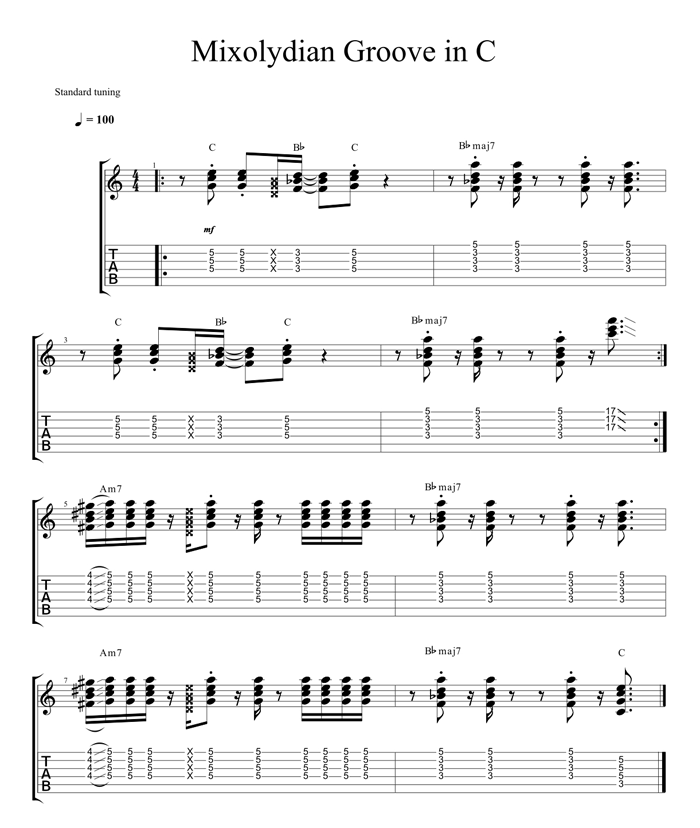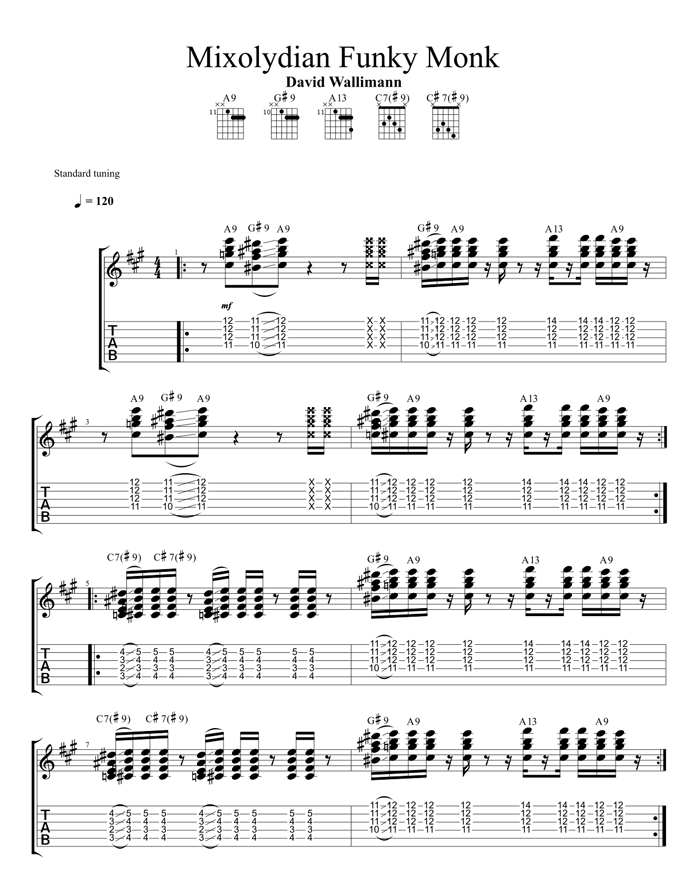Mixolydian Mode Backing Tracks
Here are the jam tracks to practice your improvisation with the Mixolydian mode.
These tracks have been provided by Jamplay from a previous version of their backing track library before they merged with TrueFire. Jamplay has now merged with TrueFire, another leader in online video guitar lessons and the backing track library there has also changed and evolved with this. It now includes things such as multitrack audio backings as well as a wide range of backing tracks to solo over.
Playlist
Here are the Mixolydian mode backing tracks in a playlist if you would like to play through them all, or continue below for the individual tracks and their transcriptions.
Individual Tracks:
Mixolydian Groove in C
An up beat track based on the C Mixolydian mode. Unlike many tracks you would use the Mixolydian mode over, this track involves a full chord progression that is formed from the C Mixolydian scale. Many applications of this scale are more based around dominant grooves as discussed below.
Transcription:

Mixolydian Funky Monk for A Mixolydian
You can use A Mixolydian over this whole track, but once your comfortable with that, I tend to like to throw some A blues scale in, particularly on the parts of the track corresponding to the first 4 bars in the transcription. See if you think you like this. This track is more based around the concept of a lot of the track being based on a single dominant grove (based on A dominant) as opposed to chord changes based on chords formed from the Mixolydian scale as was the case of the track above.
Transcription:

The Dominant Groove Nature of a Lot of Mixolydian Uses
Something I would like to mention here, is a lot of the use of the Mixolydian is based on a groove on a single dominant chord, rather than progressions that move among the various chords formed from the Mixolydian scale.
You also tend to get a lot of applications where dominant chords are moving around and you can play different Mixolydians over the various dominants, each dominant chord being with its corresponding Mixolydian scale. An example of this sort of progression is in blues where dominant chords are often used on the I, IV and V. One way to approach this is to use the corresponding Mixolydian scale for each of these chords. You also often find moving dominant chords in jazz where dominant chords are moving in 4th (e.g. E7, A7, D7, G7, Cmaj7).
More Tracks
These tracks have been provided by Jamplay from a previous version of their backing track library before they merged with TrueFire.
Jamplay has now merged with TrueFire, another leader in online video guitar lessons and the backing track library there has also changed and evolved with this. It now includes things such as multitrack audio backings where you can mute the different parts, as well as a wide range of your more traditional backing tracks to solo over. There are also InTheJam packages where you can jam with famous artists like Eric Johnson.
Visit the Jamplay/TureFire library
